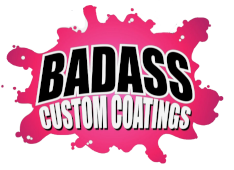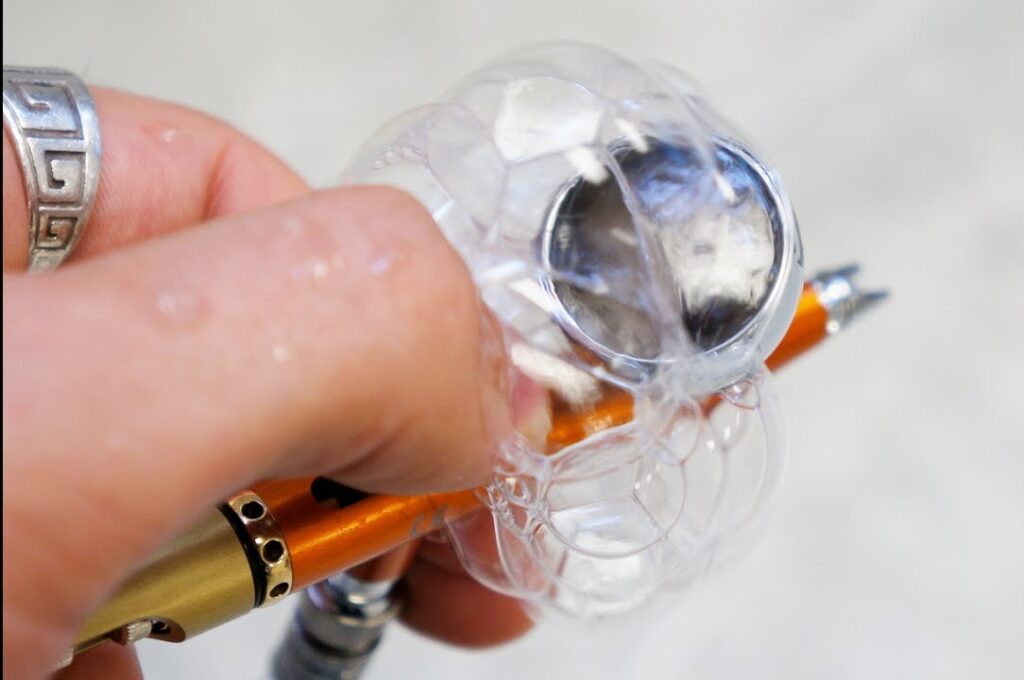Symptom |
|
Bubbles in color cup or Bottle |
Loose nozzle cap or air cap (Eclipse series) | Make sure nozzle cap is finger tight and/ or tighten air cap with wrench (Eclipse series only) | Improper nozzle to body connection | Remove and reinsert nozzle. For older airbrushes, try applying Medea Thread Sealer to the nozzle threads if there are scratches where the nozzle meets the body | Cracked or damaged nozzle | Replace nozzle |
|
Skipping |
Dried paint on needle tip | Clean needle with cotton swab dipped in appropriate cleaner | Paint too thick | Thin or strain paint to skim milk consistency | Dirty airbrush | Perform a deep clean (link to cleaning guide) | Cracked or damaged nozzle | Replace nozzle |
|
Not spraying |
Loose needle chucking nut | Make sure needle chucking nut is finger tight then look to see if the needle is moving when trigger is pulled | Bottle vent hole is plugged (bottom feed models only) | Use pushpin to unclog vent hole | Improper air pressure | See specific compressor instructions to raise or lower air pressure | Paint too thick | Thin or strain paint to skim milk or light cream consistency | Clogged nozzle | Clean the nozzle | Cracked or damaged nozzle | Replace nozzle |
|
Broken nozzle/ nozzle threads stuck |
Nozzle threads are stuck inside of the airbrush |
|
|
Spattering |
Dried paint on needle tip | Clean needle with cotton swab dipped in appropriate cleaner | Paint builds up in needle cap | Clean needle with cotton swab dipped in appropriate cleaner | Air pressure too low | See specific compressor instructions to raise air pressure, also check that nozzle cap is clean and finger tight | Paint too thick | Thin or strain paint to skim milk consistency | Dirty airbrush | Perform a deep clean |
|
Fluid Cup Discolored |
Fluid cup is showing discoloration | Don’t worry, this is normal. Depending on the kind of materials you spray and how often, this patina-like effect could show up right away, in a few years or never at all. Either way, what’s important to know is that these changes have no impact on the performance of your airbrush. |
|
Symptom |
|
Won’t turn on/ suddenly shuts off |
Compressor is too hot | Compressors do get hot, up to 150°. The thermal overload switch will turn off the compressor before it overheats. Allow unit too cool down. If problem persists, try cooling the unit with a small personal fan | If the unit has a tank, it may already be full of air | Try spraying for a little bit and see if the compressor kicks on | Compressor is not receiving power | Make sure the unit is plugged into a working socket (test with a lamp) |
|
Turns off and on while airbrush is not moving air |
The compressor has an air leak | - Spray all connections with as soapy water solution. Bubbles will indicate air leaks
- Tighten connections
- If bubbling doesn’t stop, try wrapping threads with thread sealant tape (max 3 wraps only) or applying Medea Thread Sealer to the threads
- If the air leak is in the middle of an air hose the hose must be replaced
|
|
Voltage/ Traveling questions |
You are traveling to a country with a different voltage than your compressor is rated for | It is possible to use compressors sold in North America in other countries by using a Power Converter (not the same thing as a plug adapter) with the appropriate wattage rating (greater than the wattage rating on the compressor). However, we do not advise using compressors designed for use in North America in other countries as selecting the wrong type of converter could damage your compressor and void the warranty due to misuse. The ideal situation is to purchase the appropriate compressor for your country through a local distributor. | You need a small compressor to use internationally | We recommend the IS30UP |
|
|
|


